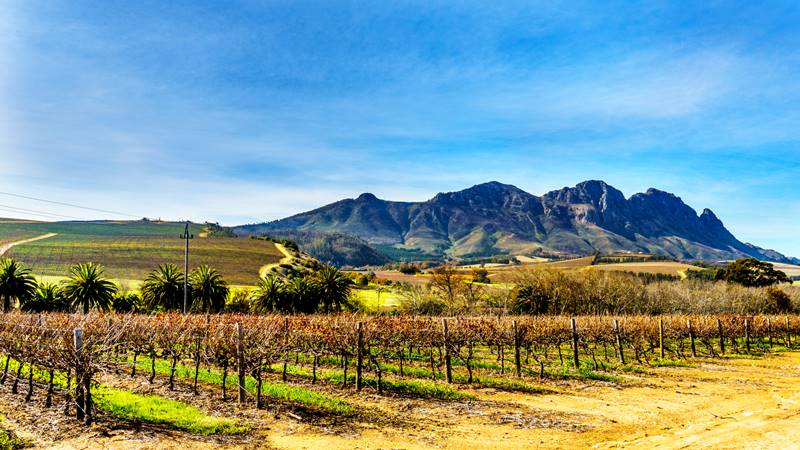South African Vineyards Adapt to Climate Change
South Africa's Vineyards Reimagine Winemaking for a Warmer World
2024-04-23

As wine enthusiasts around the world raise their glasses to celebrate the nuanced flavors of their favorite bottles, many are unaware of the tumultuous changes unfolding in the vineyards that cradle the very essence of these delightful pours. From the sun-drenched valleys of South Africa to the rolling hills of California and the ancient terroirs of Europe, vineyard owners are navigating an increasingly volatile climate that is reshaping the future of winemaking.
In the southern reaches of Africa, climate change is not merely a topic of discussion; it's a vivid reality that's reshaping the landscape. Rows of uprooted old vines pile up like nature's own commentary on the harsh conditions, while nearby, signs of new life are evident as fresh vines take root, reflecting a shift towards more sustainable and adaptive agricultural practices. This stark contrast is a vivid illustration of the resilience and ingenuity that define modern viticulture.
Across the globe, similar scenes are unfolding. From the vineyards of Australia to those in France, Spain, and Italy, winemakers face a shared challenge: adapting to changing weather patterns that directly impact the viability of their grape crops. As erratic weather becomes the norm, with intense rainfalls interspersed with prolonged dry spells, the traditional practices of vineyard management are undergoing a profound transformation.
In response to these intense rainfalls, many vineyards are adopting new vine layouts that align with the natural contours of the terrain. This involves creating drainage systems between plots that converge into reservoirs, designed to capture and store water for the inevitable dry periods ahead. This strategic adaptation not only mitigates the immediate effects of flooding but also prepares vineyards for future water scarcity.
Replanting efforts are phased, allowing beloved ancient varieties like Chenin—a staple in France's Loire Valley—to continue thriving while newer vines mature. This gradual transition ensures that the vineyards remain productive and sustainable over the long term, typically taking up to four years to yield commercially viable crops.
Biodiversity too is getting a boost. The introduction of native shrubs attracts beneficial insects and wildlife, enhancing soil health and ecosystem balance. Even the treescape is changing; water-intensive species like pines, once brought over by European settlers, are making way for more indigenous, drought-resistant flora.
A holistic approach is evident in nutrient management as well, with organic practices gaining traction. Cows meander through the vine rows, providing natural fertilization through their grazing. This integrated farming approach not only addresses the challenges of today but also plans for a sustainable, productive future over the next century, ensuring that vineyards can continue to thrive in their native terroirs.
Despite these efforts, the challenge remains daunting. Weather patterns are increasingly unpredictable, with rare but intense rainfalls and higher temperatures. Projections for regions like Western Cape's Stellenbosch are stark, with expected decreases in annual rainfall by up to 30% by 2050. The implications for water management are significant, highlighting the need for vineyards to become self-sufficient in water usage, especially as urban areas may compete for these scarce resources.
Adapting to climate change in viticulture is not just about maintaining production levels; it's about preserving a cultural and economic cornerstone for many regions worldwide. The spirit of innovation and resilience demonstrated by winemakers today is crucial. They are not just preserving the legacy of wine; they are ensuring it can continue to be a source of joy and celebration, even as they face the climatic challenges of tomorrow. This is the new vanguard of viticulture—where tradition meets innovation at the intersection of climate change.
Founded in 2007, Vinetur® is a registered trademark of VGSC S.L. with a long history in the wine industry.
VGSC, S.L. with VAT number B70255591 is a spanish company legally registered in the Commercial Register of the city of Santiago de Compostela, with registration number: Bulletin 181, Reference 356049 in Volume 13, Page 107, Section 6, Sheet 45028, Entry 2.
Email: [email protected]
Headquarters and offices located in Vilagarcia de Arousa, Spain.